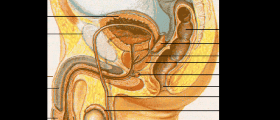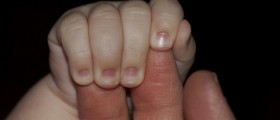Some females ejaculate during orgasm just like males although the purpose of ejaculation is different. A male orgasm expels semen into the vagina for procreation. The purpose of female ejaculate is not known.
Female cum is made up of secretions produced by glands around the female urethra (para urethral glands). According to researchers, it is a clear thick whitish fluid. There is a lot of confusion regarding female ejaculation due to differences of personal opinion and influence of pornography. Available evidence on the source and composition of female ejaculate is controversial.

PSA is detectable in urine after orgasm as well. But the concentration of PSA is higher in the female ejaculate than in urine. There is evidence of a backward flow of female ejaculatory fluid into the bladder as well. These facts suggest that para urethral glands are the actual source of female ejaculate.
Para urethral glands are small. Their ability to secrete copious amounts of ejaculate is therefore doubtful. The large volume of fluid expelled during orgasm (like shown in adult entertainment products) needs to be stored somewhere in the pelvis before it is expelled. There is no feasible storage location in the female pelvis to store such a large volume of fluid other than the urinary bladder.
The best studies compare female ejaculatory expulsions with the same woman's own urine before and after orgasm. Creatinine, urea, glucose, fructose levels in urine differ from those in the female ejaculate. Methylene blue (a dye used to detect components if urine) was detected only in urine but not in female ejaculate in one study.
These studies also admit to a possibility of a retrograde ejaculation (ejaculating backwards into the bladder) in females. This might be the reason for the rise of PSA in urine after female orgasm. Samples collected during these studies contain components of female ejaculate as well as urine. Therefore these studies suggest that the large volume of fluid in "squirting" is due to urine diluting the scanty orgasmic expulsions of the para urethral glands.
Some studies link female ejaculation to urinary incontinence. The female orgasm may involve contraction and relaxation of pelvic floor muscles. These muscles also maintain continence. These studies suggest a loss of continence during an orgasm to explain the large volume of fluid.
Although the available evidence is controversial, the general agreement in the scientific community is that female ejaculate is scanty, whitish and thick.
- Davidson JK, Darling CA, Conway-Welch, C (Summer 1989). "The role of the Grafenberg Spot and female gushing in the female orgasmic response: an empirical analysis".
- J Sex Marital Ther 15 (2): 102-120
- Wimpissinger F, Stifter K, Grin W, Stackl W (September 2007). "The female prostate revisited: perineal ultrasound and biochemical studies of female ejaculate".
- J Sex Med 4 (5): 1388-93, discussion 1393
- Bell S. (1994). "Feminist ejaculations". In Alison Jaggar (ed.). Living With Contradictions: Controversies in feminist social ethics. Boulder: Westview. pp. 529-36. ISBN 978-0-8133-1776-2.
- Huffman, J. W. The detailed anatomy of the paraurethral ducts in the adult human female. American Journal of Obstetrics and Gynecology, 55: 86-101, 1948
- Sevely JL, Bennett JW (1978). "Concerning female ejaculation and the female prostate". J Sex Res 14: 1-20.doi:10.1080/00224497809550988
- Photo courtesy of SteadyHealth
















